Matisse, Diebenkorn, Church, and Kassman
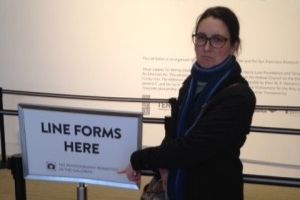
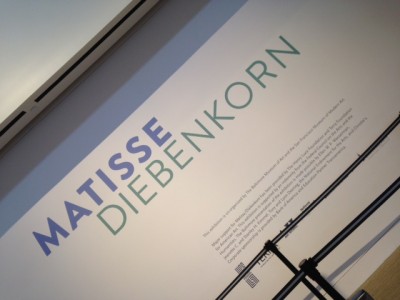
Last week, thanks to tickets through the Greater Baltimore Cultural Alliance, Rachel and Joanna visited the Baltimore Museum of Art’s exhibit “Matisse/Diebenkorn,” which brings together the work of these two artists, Henri Matisse and Richard Diebenkorn, for the first time. As always when museum professionals visit other museums’ exhibits, we had Thoughts.
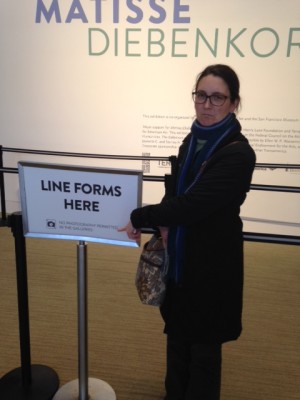
Joanna:
I’m not an art historian by any means, but I did take a few classes in college – just enough knowledge to make me dangerous. For one thing, I thought I knew Diebenkorn’s work, but the first gallery showing his early abstract work confused me; thus my very first Thought was, ‘Oops, I was picturing someone else.’ Pro-tip: look at the exhibit website before visiting, instead of just thinking you know what’s going on. The BMA’s helpful list of things to know includes “[Diebenkorn] moved between abstraction and figuration,” which would been useful if I’d read it ahead of time. Thankfully for my ego, the third gallery included works that were more familiar.
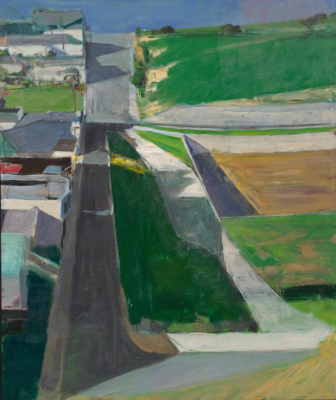
Rachel:
Having no background in art history, I tend to find the labels at art exhibitions a little too concise, containing little more than title, date, artist, and who owns the piece now. I was thrilled to find that BMA Senior Curator of European Paintings & Sculpture Katy Rothkopf, who curated the Baltimore-occurrence of this show chose to use meaty labels, often including contextual details about the techniques used, the artists’ lives during the period of the piece’s creation, and particularly helpful explanations of how one piece could have been inspired by another.
A perfect example – Joanna and I loved the label for Matisse’s Reclining nude with arm behind head (1937) which included a reference to a “stumping” and was immediately followed by an explanation of the technique and what it does for the piece!
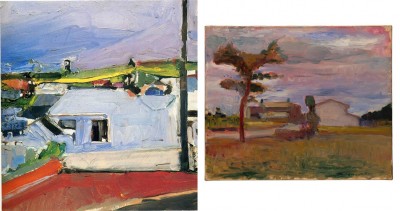
Joanna:
I particularly enjoyed the inclusion of books from Diebenkorn’s own library, all focused on Matisse’s work. Not only did this help strengthen the exhibit’s argument – that Matisse was a heavy influence on Diebenkorn – but it also showed a willingness to break out of the traditional “art, and art only” style of exhibition and include supporting artifacts and documents, a willingness which I think many art museums have recently embraced.
Rachel:
I agree with Joanna! Including material beyond the artworks themselves really rounds out the experience for me. I would urge all art curators to go even further if possible – I love when there are multiple photos of the artist at work, images of the artist’s workspaces, even cases with their tools.
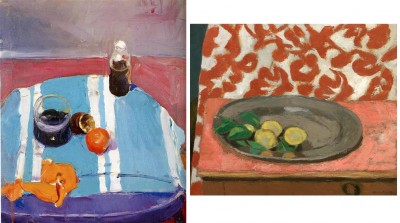
Joanna:
The BMA offered audio guides, which (at least when we were there) nearly every guest accepted. I am not personally a fan, though I know many people very much enjoy them, and they can be a useful tool for conveying additional information without overloading the walls with text. But one reason I don’t like them is that they discourage conversation. This type of exhibit, with labels asking visitors to actively look at each image and compare them to others in the gallery, seems particularly well-suited to dialogue… but everyone is just listening to their headsets. Rachel and I did not have headsets so we felt free to discuss (quietly, don’t worry), and I think that enhanced our experience. I did see at least one other pair of women braving the isolation of the headphones to talk about what they saw, which made me happy – especially because one of the women said to the other, as if continuing an earlier “Hmm, I’m not so into these” conversation, “Well, I would take a Diebenkorn if someone gave it to me.” Me too!
Rachel:
I will say that having everyone else in the gallery wearing headphones made me much more comfortable voicing all my thoughts and opinions to Joanna! I’m often worried about disturbing other visitors or making anyone feel judged (we don’t have to like the same art, after all), so on a (very) personal level the popularity of the audio tour worked out great for me. But I also know I would have enjoyed the experience much less without the ability to turn to Joanna and discuss.
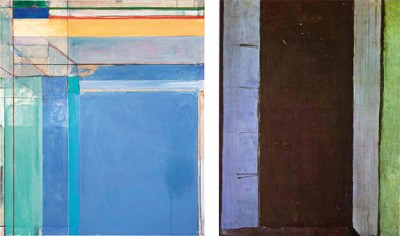
Ocean Park Series 79 (1975) and French Window At Collioure (1914)
If you’re hoping to see the exhibit yourself, make plans to go soon – the show closes on January 29th!
